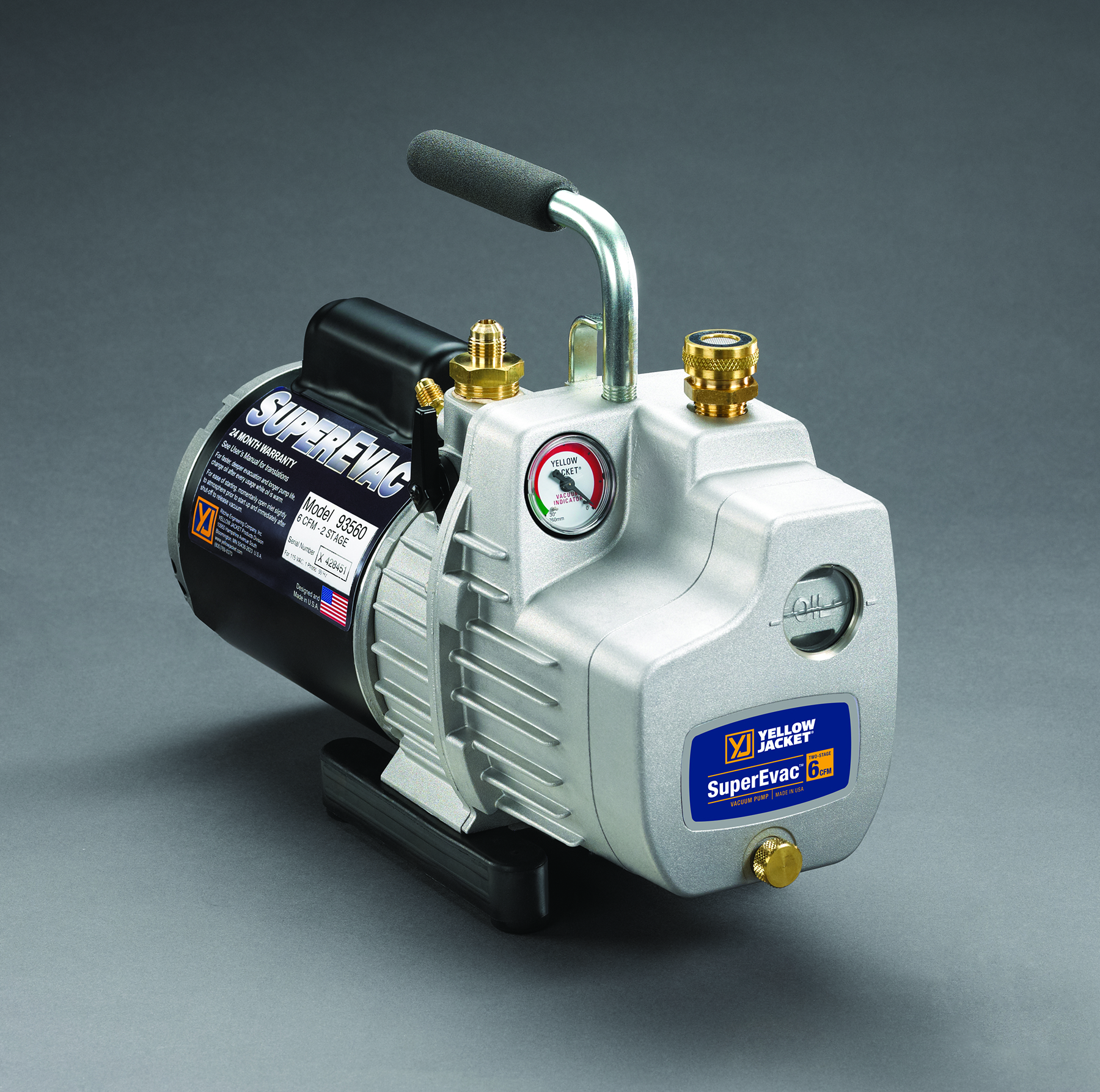Moisture: How just one small drop dampens your profits, and the vacuum pump that ensures efficiency
With the increased moisture sensitivity of modern A/C and refrigeration systems, proper evacuation is essential. Most system complaints can be attributed to one thing — moisture.
A small drop of moisture can cause big problems. It can hurt an HVAC contractor’s profits, as well as their reputation.
Your Enemy: Moisture
During new system set-up, all protective caps are removed and moisture and air is admitted into the system components. If air – a non-condensable – remains in the system, it collects on the high side and reduces system efficiency. This causes a rise in head pressure. The discharge valve gets hotter than normal and organic solids form, which causes compressor failure.
Moisture in a refrigerant system also can form ice, which closes off openings in expansion valves and cap tubes, preventing adequate cooling. Ultimately, moisture and air combined with refrigerants containing chlorine can produce acids and sludge and cause in-warranty failures.
During service and parts replacement, moisture and air can re-enter the system. Moisture and air can also enter through system leaks. The higher the humidity level in the air, the bigger the potential for a problem.

Vacuum Cleaning
A vacuum is a space from which air and other gases have been reduced. Deep vacuum means reduced to the greatest degree reasonably possible. As air is pulled out of the system, the pressure in the system drops below the air pressure outside. In other words, a vacuum has less than atmospheric pressure. A vacuum pump removes air and moisture from the system before the system is damaged. The deeper and more complete the vacuum, the more moisture is removed, and the likelihood of system complications caused by unwanted water or other contaminants is reduced.
As the internal pressure drops, the temperature at which moisture boils inside the system also drops. For example, at an internal pressure of 29.87 inches, water boils at only 6°F. At that pressure, the moisture readily changes into a vapor, which a pump removes. The deeper and more complete the vacuum, the more moisture is removed from the system.
When the electronic vacuum gauge (which should be connected to the AC/R system) has reached the desired reading, the pump has done its job and the evacuation process is complete.
Micron Levels
AC/R system manufacturers have individual specifications for the recommended vacuum prior to charging. However, it is generally considered good practice to evacuate a system to below 1,000 microns. After isolation, the system should not rise above 2,500 microns within one hour. If the reading rises to over 2,000 microns, there is still moisture to be evacuated or there is a system leak. After the deep vacuum is reached again and the system is valved off, if the reading holds below 2,000 microns the system is dry and tight. If the reading stays in the mid range, there is a gross leak in the AC&R system.
Some equipment manufacturers specify deeper vacuums at 400 microns to ensure that even more harmful water vapor is removed from the system.
Fast and Simple
Competition, increasing refrigerant cost, legislation, and higher customer expectations all combine to put a squeeze on profits, and a less reliable pump means more work in exchange for a lesser pay-off. Other situations may cause you to reconsider how you evacuate systems, like high efficiency systems, which are more sensitive to damage from contaminants, new oils, which require vacuums for contaminant removal, and the need for triple evacuation and purging. Taking advantage of new technology and service techniques can help you protect and improve your profits.
With the YELLOW JACKET® SuperEvac™ system, you can “pull” a fast vacuum through both high and low sides, reaching less than 500 microns. At that point, simply valve off the system and monitor the pressure with the electronic vacuum gauge. Every YELLOW JACKET® vacuum pump has a gauge that will give you a rough indication of vacuum progress.
The heart of the system is the vacuum pump, but you’ll maximize your opportunity for profit and save time when your system components are engineered and matched for fast, deep, unrestricted evacuation.
A two-stage rotary vane vacuum pump will give you the most effective vacuum. The YELLOW JACKET® SuperEvac™ System pulls a fast vacuum to 15 microns. Fast gives you more time for more calls. 15 microns is deep enough to get rid of contaminants that could cause system failure, customer dissatisfaction, and no-charge rework.
About YELLOW JACKET
The YELLOW JACKET brand name is synonymous with the highest quality and most complete line of HVAC/R tools in the industry. The brand’s roots go back to 1946 when Ritchie Engineering Company, Inc., a manufacturers’ representative organization, became a hose manufacturer. With an emphasis on quality and service, Ritchie Engineering, based in Bloomington, Minn., trademarked the hose as the YELLOW JACKET® Charging Hose in 1950. Since then, the company has been engineering, manufacturing, and continuously improving the YELLOW JACKET hose while adding new products to its portfolio. Today, YELLOW JACKET products are proudly made in the U.S.A. and sold worldwide through a network of authorized HVAC&R and automotive wholesalers. For more information, please call (952) 943-1333 or visit our Web site at www.yellowjacket.com.
